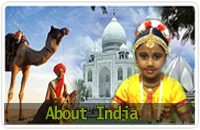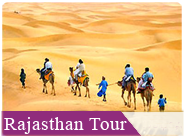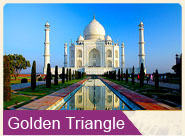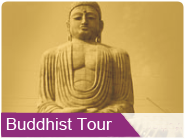At Bhubaneswar,the day breaks with the tolling of temple bells declaring the advent of the Sun God. The daily business progresses with religious fervour. The entire life of the city revolves around and lives for its temples, and vice versa. Against this backdrop stand Bhubaneswar, the capital city of the state of Orissa. King Ashoka embraced Buddhism and non-violence in this city. A vertex of the temple triangle of Orissa, Bhubaneswar is well connected with direct air, road, and rail connection with other cities of India. Bhubaneswar, the name originates from the Sanskrit word Tribhuvaneswara, one of the name for Lord Shiva. The area in antiquity constituted the famed kingdom of Kalinga, conquered after a bloody battle by Ashoka. It was after this battle that Ashoka renounced violence and embraced Buddhism. By 1st century BC, under the ruler of Kharavela dynasty, it regained its lost glory and became the centre of activities. The monastery caves, built under their patronage, included Khandagiri and Udaygiri caves as well. Most of the kings of Orissa constructed beautiful temples. Bhubaneswar also came under the influence of Afghans, Marathas, and the British (till 1947).
Bhubaneshwar Facts:
• Area 124.74 sq. km
• Population 4,11,542 (1991)
• Altitude 45 m above sea level
• Languages Oriya, Hindi, and English
• Best time to visit October to April
• STD code 0674
Tourist Attractions in Bhubaneshwar
Bhubaneswar, once home to some 7,000 temples devoted to different deities, was a magnetic centre of Shaivism and has about 500 temples even today. The magnificent Lord Lingaraja temple is among the most imposing temple here. There are fine chlorite sculptures of Parvati, Ganesha and Skanda in large niches. Vertical ribs dominate the tower while horizontal dividing lines decorate the pyramidal roof with its bell-shaped top. The Rajarani Temple is famous for its fascinating female figures depicted stunning variety of amorous poses. The Mukteshwara Temple has an array of female figures and ravenous ascetics, dwarfs and animals. The beautiful and the grotesque are depicted through exquisite carvings. The Parashumeshwara Temple, one of the earliest extant temples of Orissa, symbolizes all that is chaste and elegant. The Brahmeswara Temple and rock edicts on the Dhauli Hills belong to Ashok are must-visit sites of Bhubaneswar.
Tourist Attractions around Bhubaneshwar
Bhubaneswar, one of the vertex of the famed Golden Triangle of Orissa along with Konark and Puri, is generally visited along with these two places. Puri, one of the four holy dhams of Hinduism, is the hallowed seat of Lord Jagannath. On the shores of the Bay of Bengal, Puri is a famous beach on the eastern side of peninsular India. Konark (65 km) houses the celebrated Sun Temple, a class of its own. Fine carvings covering every inch of the outer surface, portrays the vast panorama of life. Atri (42 km from Bhubaneswar) has hot sulphur springs and a temple devoted to Lord Hatakeswar, Udaygiri and Khandagiri are famous archaeological sites offering a fine specimen of rock-cut temples. Nandankanan (20 km from Bhubaneswar), a zoo, is especially known for white tigers, kept in their natural setting. Pipli (20 km from Bhubaneswar on the way to Puri and Konark) is renowned for its bright coloured appliqué work done onto a fanciful range of items. Chilika Lake (121 km from Bhubaneshwar), is the largest back water lake in Asia. Gopalpur-on-Sea (at 180 km from Bhubaneshwar) has beautiful beach resort and can be visited on a daylong trip.
About Bhubaneshwar |












